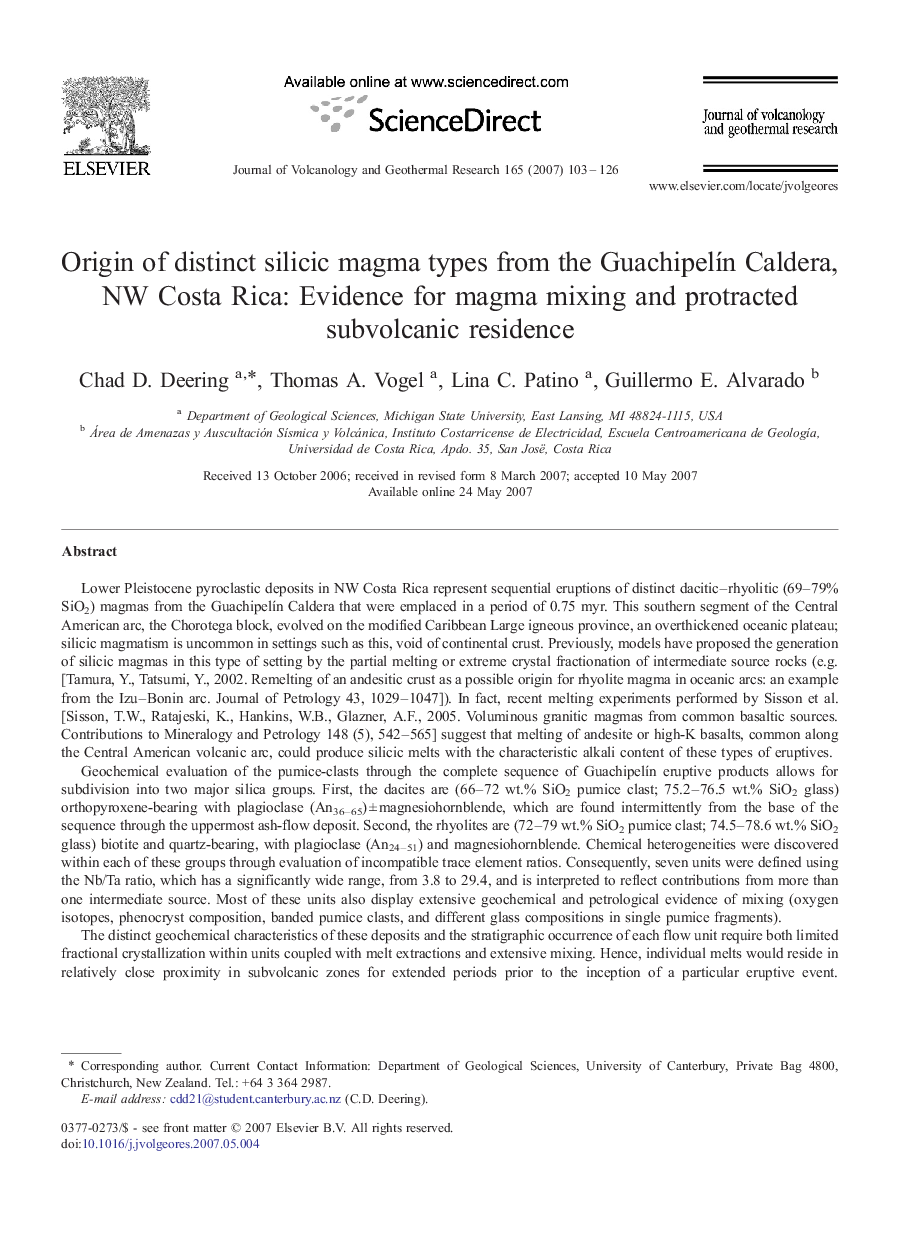| Article ID | Journal | Published Year | Pages | File Type |
|---|---|---|---|---|
| 4714658 | Journal of Volcanology and Geothermal Research | 2007 | 24 Pages |
Lower Pleistocene pyroclastic deposits in NW Costa Rica represent sequential eruptions of distinct dacitic–rhyolitic (69–79% SiO2) magmas from the Guachipelín Caldera that were emplaced in a period of 0.75 myr. This southern segment of the Central American arc, the Chorotega block, evolved on the modified Caribbean Large igneous province, an overthickened oceanic plateau; silicic magmatism is uncommon in settings such as this, void of continental crust. Previously, models have proposed the generation of silicic magmas in this type of setting by the partial melting or extreme crystal fractionation of intermediate source rocks (e.g. [Tamura, Y., Tatsumi, Y., 2002. Remelting of an andesitic crust as a possible origin for rhyolite magma in oceanic arcs: an example from the Izu–Bonin arc. Journal of Petrology 43, 1029–1047]). In fact, recent melting experiments performed by Sisson et al. [Sisson, T.W., Ratajeski, K., Hankins, W.B., Glazner, A.F., 2005. Voluminous granitic magmas from common basaltic sources. Contributions to Mineralogy and Petrology 148 (5), 542–565] suggest that melting of andesite or high-K basalts, common along the Central American volcanic arc, could produce silicic melts with the characteristic alkali content of these types of eruptives.Geochemical evaluation of the pumice-clasts through the complete sequence of Guachipelín eruptive products allows for subdivision into two major silica groups. First, the dacites are (66–72 wt.% SiO2 pumice clast; 75.2–76.5 wt.% SiO2 glass) orthopyroxene-bearing with plagioclase (An36–65) ± magnesiohornblende, which are found intermittently from the base of the sequence through the uppermost ash-flow deposit. Second, the rhyolites are (72–79 wt.% SiO2 pumice clast; 74.5–78.6 wt.% SiO2 glass) biotite and quartz-bearing, with plagioclase (An24–51) and magnesiohornblende. Chemical heterogeneities were discovered within each of these groups through evaluation of incompatible trace element ratios. Consequently, seven units were defined using the Nb/Ta ratio, which has a significantly wide range, from 3.8 to 29.4, and is interpreted to reflect contributions from more than one intermediate source. Most of these units also display extensive geochemical and petrological evidence of mixing (oxygen isotopes, phenocryst composition, banded pumice clasts, and different glass compositions in single pumice fragments).The distinct geochemical characteristics of these deposits and the stratigraphic occurrence of each flow unit require both limited fractional crystallization within units coupled with melt extractions and extensive mixing. Hence, individual melts would reside in relatively close proximity in subvolcanic zones for extended periods prior to the inception of a particular eruptive event. Considering the temporal (< 0.75 Ma) and spatial (single caldera) constraints of this sequence of eruptions, significant chemical variations of the magmas have occurred.
